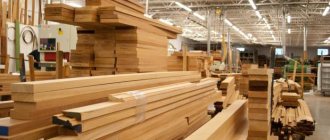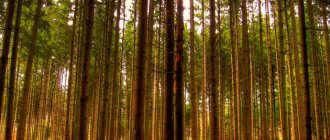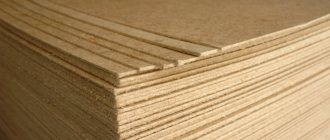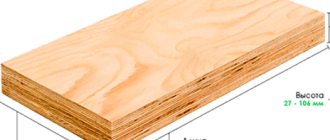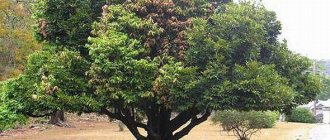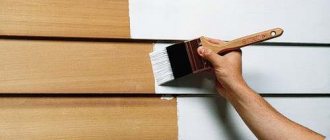Material for production
The primary raw material for lumber production is tree trunks. They are subject to advance cleaning of branches and bark. The material can be either coniferous or deciduous trees. The latter are often used as lumber for finishing premises and buildings. Coniferous trees are used for the construction of load-bearing structures. The production of lumber has virtually no waste, since it is a valuable recyclable material that is used for industrial and domestic purposes.
Some of the available types of wood that are used to make lumber are birch and poplar. Common tree species are pine, spruce, linden, ash, maple, and larch. The most industrially significant wood is hornbeam, oak, and cedar.
Birch is considered a fairly light material; it has an unusual structure and reasonable cost.
Larch is used to produce a moisture-resistant product that is resistant to fungus and mold.
Ash wood has excellent elasticity and high strength properties.
Oak is used to create furniture, stairs, and floors because it has good strength characteristics. This is an aesthetically beautiful and quite durable material. It is quite popular, even despite the high cost.
Combustible materials that can catch fire include pine.
Spruce is a flexible and soft material that can be easily processed.
timber
By definition, this is lumber with cross-sectional sides of 100 mm and above. Depending on the number of processed layers, it can be two-edged, three-edged and four-edged.
The main material for the construction of wooden houses. It is used in the form of upper and lower frames for wooden buildings, for the manufacture of grillages, as load-bearing posts of frame houses, in roof truss systems, for the manufacture of wooden floor beams, in the form of posts for fences and canopies.
Types of lumber
The type of finished product is distinguished by the type of raw material (wood species), the equipment used, the technological process, and the choice of cutting method. The texture of the board directly depends on the last characteristic.
The types of methods for sawing logs differ in the direction of cutting the material. Sawing is divided into:
- transverse (wood is sawn across the grain);
- semi-radial or rustic (the cut is made at an acute angle to the fibers);
- radial (the axis of the cut passes through the core of the log);
- tangential (tangentially at some distance from the core).
Cutting logs across the grain is mainly used to create artistic parquet; the semi-radial type of cut is suitable for the production of flooring. Boards made using the radial method have a high strength index, are resistant to any deformation and external influence, and are also aesthetically beautiful. It is possible to achieve a pattern on the surface of the finished product, which consists of arches and rings, thanks to tangential cutting.
The surface of some boards may become peeling over time. A uniform texture is ensured by radial cutting. Lumber produced by this method, although high in cost, is quite in demand on the market due to its specific dimensions, optimal mechanical properties and the degree of wood shrinkage.
The process of drying boards can be carried out outdoors and in specially equipped rooms (chambers). When drying the finished product in the open air, the moisture content is about 20%, when using chambers - about 14%. The cut of the board can be trimmed (along the entire length of the product), as well as non-trimmed.
According to the degree of processing, the following types of lumber are distinguished:
- unedged - when there are untreated sections of logs, but there are no longer knots;
- edged - defective side parts of the log are cut down, resulting in a rectangular shape;
- planed - no roughness on one or more edges.
Wood processing methods
Lumber is treated with antiseptic agents, as well as special chemical compounds and substances such as: a solution of DDT in turpentine or kerosene, a mixture of equal parts of turpentine and kerosene, disinfestant, a solution of technical hexachlorane 1%.
The main methods of processing lumber:
- Applying an antiseptic with a brush . But before this, it is initially injected into the flight hole of the material being processed, and only then applied with a brush. The procedure must be repeated two to three times with intervals of 1-2 hours. It is best to treat infected lumber in the spring or early summer. To protect raw materials from rotting, different antiseptic compositions are chosen. The simplest compositions are a solution of copper sulfate or zinc chloride.
- Dipping the wood into the prepared liquid . You need to fill a wooden barrel halfway with a solution of 20% copper sulfate or zinc chloride. For example, the ends of the pillars that will be in the ground are lowered into this liquid. The log should be kept in the solution for about 2 days. After this, the poles need to be placed with the treated ends up under a canopy for 30-40 days. The treated lumber will remain in the ground for at least 5 years, without signs of decay.
- Burning the ends of the bars that will be in the ground. The ends can be coated with resin, wrapped with roofing felt or roofing felt.
Lumber Specification
Lumber is different in shape, standard sizes, mechanical properties and has several types.
A timber is a log that has been hewn on all sides. Scope of application – material for the construction of buildings, an element in the creation of windows and stairs. The product has a thickness of 100 mm.
The bars are classified as miniature bars, since their thickness is less than 100 mm. There are unprocessed, planed (at least 1 side of the product is processed), calibrated (adjusted to a certain size) bars. Ready-made material is used in the manufacture of furniture, lathing, flooring, frames, gazebos, etc.
Boards are a material made from logs or bars. There are edged (with a smooth edge), edged on 1 side and unedged. Boards are also divided into calibrated ones (with specified standard sizes).
Sleepers are a material that has a high strength index and is susceptible to temperature changes.
Gorbyl. This product includes boards created by cutting logs. The product has a smooth and semicircular surface area.
Obapol is made from the side of a log. The finished product has only 1 flat side.
A rounded log serves as a good material for building a house. Its rounded, smooth shape and reliable locking system ensure the strength of the structure. This material is one of the most expensive in terms of price. But the cost is justified, since the construction does not require additional finishing work.
Profiled timber is also quite popular in construction. It is made either by milling or planing. The connection between the elements is strong and reliable. A structure made of such material will not require the construction of a strong foundation or any finishing.
Glued laminated timber. The raw materials for it are whole boards or individual pieces. The product consists of lamellas that are tightly connected. Such timber has high strength characteristics, is durable, and is resistant to external influences.
A block house is produced by cutting round logs according to the “square in a circle” pattern. It is used for external finishing work, as it has good heat and sound insulation properties. It also attracts with its strength characteristics.
Application of hardwood
Most often, hardwood lumber has high hardness. They are denser and heavier than coniferous varieties. Such materials are less susceptible to adverse environmental influences. Therefore, their cost is quite high.
Lumber from deciduous trees is used to create rafters, flights of stairs inside a private house, cladding walls and partitions in rooms, as well as for ceilings.
Linden, poplar or birch are not used for the manufacture of load-bearing structures or finished floors. They are soft and light.
Having familiarized yourself with the concept of what lumber is and what types there are, you can navigate the purpose of the products. Today there are a huge number of them.
Pros and cons of lumber
Humanity has been surrounded by wooden products for many centuries. Wood was used to create residential buildings, churches, baths and similar buildings. In addition to the premises, window frames, tables, chairs, cabinets, beds, etc. were also created. This material is no less relevant today due to its characteristics. Below are the advantages and disadvantages of lumber.
Advantages:
- the material has a high load-bearing capacity, despite its low weight;
- characterized by simplicity and ease of processing (drilling, cutting, manufacturing of various shapes);
- minimal labor costs during installation;
- the natural composition ensures safety for humans and the environment and is not prone to cause an allergic reaction;
- material processing work does not require a lot of time and money;
- aesthetically pleasing material;
- the natural smell of wood has a beneficial effect on the indoor microclimate;
- lumber comes in many shapes and sizes;
- low cost of the product.
Flaws:
- the material can quickly ignite;
- susceptible to the influence of fungus, mold and insects;
- prolonged exposure to moisture leads to rotting processes.
To provide this building material with properties such as wear resistance and durability, it is treated with special materials. substances that protect lumber from negative external factors and the ability to quickly ignite.
general characteristics
Today there are a huge number of different types of lumber. They are obtained by cutting along the fibers. All lumber requires proper processing. GOST 8486-86 and 2695-83 are basic in the production of such products. However, this industry is regulated by many other standards. Their implementation is a necessary condition in the process of creating quality products.
In addition to its positive qualities, wood is also known for its disadvantages. It is susceptible to various destruction, rotting, and the vital processes of insects and microorganisms. Also, this material can be deformed under the influence of environmental conditions. To avoid all these troubles, proper processing is required. To understand what lumber is, you need to familiarize yourself with the conditions for preparing it for processing.
Types of lumber
Determining the grade of lumber is done by assessing the structure of the worst side, face, edge and section.
A selected grade product must be free of rot, mold, fungal stains, growths and any foreign inclusions on the surface of the material. There should also be no cracks from shrinkage. The number of fused healthy knots should be no more than two per 1 m of length. Shallow cracks on the edge and layer of the product should not exceed 16% of the total area, and deep cracks - 10%. Such building materials are often used in automotive and shipbuilding.
The first grade is used in the construction industry. Its main characteristics are the absence of dry knots that stagger; healthy knots should be no higher than 1 cm; There should be no cracks larger than 1 cm. There should also be no rottenness, overgrown wounds on the wood, mechanical damage, mold, foreign inclusions and young layers of wood.
The second grade is often used for furniture production. Such lumber is characterized by the following properties: the total length of cracks does not exceed 1/3 of the total length of the product; the number of wormholes is no more than 3 per meter of length; there is no rottenness, traces of insect damage, mechanical damage, or other inclusions.
The third grade is used to create containers.
The fourth grade has found application in the construction of domestic premises, utility buildings, and gazebos. In addition, boxes, scaffolding, pallets, and formwork are made from lumber of this type.
The influence of part size on its classification
Types of lumber
A timber is the same timber, but with smaller dimensions, the standard section size is 40×40 or 50×50 mm. Used in the furniture industry and for the production of joinery.
A lath is a type of bar, flatter and narrower, available in different sizes. Often such a product is sawn directly at the construction site, its width and height are adjusted to the required dimensions.
Boards are edged products whose width ranges from 85 to 140 mm, and thickness ranging from 27 to 45 mm. Products are needed in capital construction, for finishing premises, and in the production of furniture.
The board is divided into 5 grades:
- Selective - applicable in shipbuilding, car side sheathing and creating luxury class interiors.
- First and second grade lumber is suitable for the production of furniture facades.
- The use of third-grade boards is construction projects.
- For fourth grade boards – production of boxes. They are used to pack large mechanisms for shipment.
Popular types of boards:
Parquet board structure
- Parquet - its bottom layer is made of roughly processed wood, and elite species are used for the top.
- Terraced – durable and light, it is made from the best wood.
- Window sill - well dried, with special impregnation.
- Engineering - with a top made of wood and a bottom layer of plywood.


